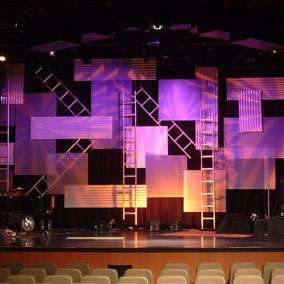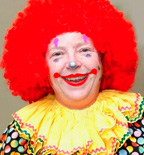
Kitty_K
5 Years Experience
Los Angeles, CA
Female, 30
I am a Los Angeles based decorator and have worked on a range of projects from an Academy Award winning feature to commercials for brands like Bank of America and Kay's Jewellers. An average day on the job involves me visiting high-end stores and prop houses in Los Angeles to photograph and price furniture, lighting fixtures, drapery, and art. I am responsible for running a crew and collaborating creatively with the director, production designer and cinematographer. Ask me anything!
I am sure a place like Omega Cinema Props in Hollywood would be very interested in fabric. They have a fantastic drapery dept and often make custom upholstered items for period piece films and television shows.
1. Break down the script line for line, highlight all set dressing items that are either specifically mentioned or inferred to. Example - for set name "INT. HOSPITAL PATIENT ROOM" a hospital bed is mentioned and I will make a note of this. I will also include, "iv stand, bedside table, rolling side table, bedside lamp, side chair" even if not mentioned in the script because those items would be in a patient room.
2. Do a google image search and dig up reference images for what I think each set should look like. Compare my reference images with the designer. Talk with the designer about what he/she sees as being key elements in the sets.
3. Create a moodboard with images of "character" pieces for the director to look at. Give him/her my take on what I feel like would belong in the character's space. Get approval for specific ideas and notes to make any changes.
4. Consult with the cinematographer on lighting, how much practical lighting is going to be relied on to light the set and color palette.
If you are still building your contact list and not yet able to do long term gigs on set, I would suggest trying to get a job in a field related to interior design so you can continue to build on your knowledge while still paying your bills. When I was still coming up I worked as an executive assistant at a media company. While I wasn't learning new skills as a decorator, it did teach me how to do things which I still use now such as being assertive and professional on the phone, drawing up expense reports and managing orders and accounts. It is possible to apply skills from completely unrelated jobs to the position of being a set decorator, because the set decorator must wear a variety of hats: someone who is creative but also has to manage other people, manage a budget and act as a representative of the department.
Hi Josie, I am not currently taking any interns. Honestly, the industry has changed and now most film productions don't take unpaid interns because of the liability issues that come with it. We did have an intern on a recent feature film but that was a very special case: the young lady was the daughter of a studio executive :) I would suggest trying to submit yourself as an art pa or a general set pa. Getting on a set and observing is the first step towards learning more about the production process.
Hotel Front Desk Agent
 What's the MOST trashed you've ever found a hotel room?
What's the MOST trashed you've ever found a hotel room?
Birthday Party Clown
 OK seriously, how DOES the clown car thing work?
OK seriously, how DOES the clown car thing work?
Police Officer
 Can I become a cop if I have misdemeanors on my record?
Can I become a cop if I have misdemeanors on my record?
I studied at UCLA's Film/TV program and while I did not receive formal training in art department during school, my mentor on the other hand got her start in stage design at her local community college. If you have a community college in your city, I would start by looking up their classes and seeing what they offer. I would also check out as many books as you can from the library about design movements and furniture. Learn to identify a Le Corbusier or an Eames piece of furniture or what the difference is between a day bed and a chaise. All those little tidbits will come in use right away if you can memorize them.
If you are asking HOW a set should be dressed I often think about two key concepts: 1. Layering and 2. Control of Color Palette:
Layering: When I watch a film I occasionally find that the set dressing looks too clean or "staged". In some cases, the staged look is intentional (as in a Wes Anderson film) because the director is not trying to simulate reality but instead create a world that is HYPER real. However in a verite style film, the sets require a layer of clutter that give it a feel of authenticity. In real life, no one's house is perfect at all times. We may have a newspaper and stack of mail on the dining table, a pile of shoes next to the door or a scarf hanging over the back of a chair. Without those little touches you risk pulling the viewer out of the movie; they will feel like they are looking at a set instead of getting lost in the story. However, there is a fine line to achieve - the decorator needs to make the set look real but you can't overdo that top layer so much that it looks like we didn't do our job in maintaining an aesthetic that rings true for the character and space.
Color Palette: Over the years I have taught myself to maintain a tight grip over the color palette of the frame. I decorated an Academy Award winning feature film in which the director's main reference images came from movies of the 1970s in NY such as "The Godfather" and "Taxi Driver". The color palette for these films were dense and deep - mustard, blood red, forrest green and walnut brown. Bright sunny colors were avoided throughout most of the movie and this set the tone for the story. While real life does not adhere to a color palette, in a movie or tv show, if you don't maintain control, you may risk losing the viewer again. Distracting pops of color may draw the viewer's eyes away from the focus of the frame which should be on the action and the characters.
Do you want to stay in the art department world? If so, join the SDSA - or Set Decorators Society of America. The organization throws a party every month and its a great place to meet people and make new connections.
-OR-
 Login with Facebook
Login with Facebook (max 20 characters - letters, numbers, and underscores only. Note that your username is private, and you have the option to choose an alias when asking questions or hosting a Q&A.)
(A valid e-mail address is required. Your e-mail will not be shared with anyone.)
(min 5 characters)
By checking this box, you acknowledge that you have read and agree to Jobstr.com’s Terms and Privacy Policy.
-OR-
 Register with Facebook
Register with Facebook(Don't worry: you'll be able to choose an alias when asking questions or hosting a Q&A.)